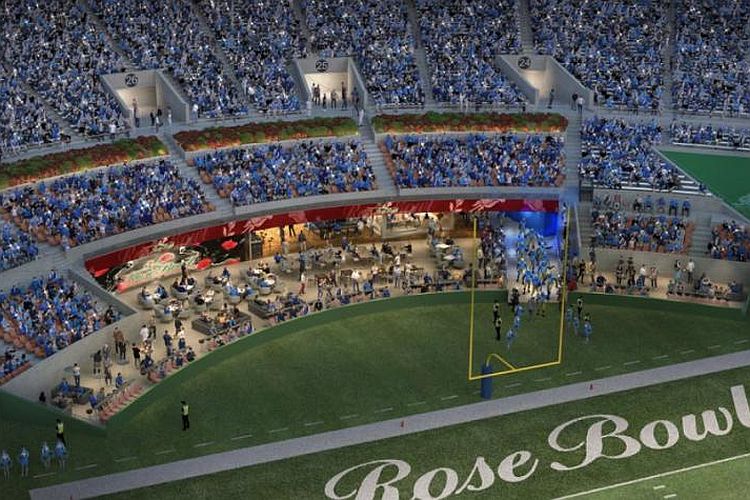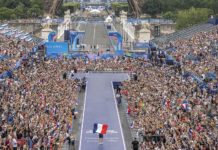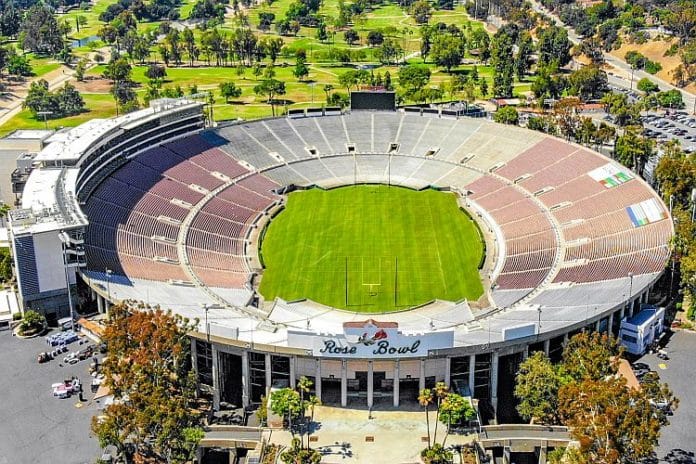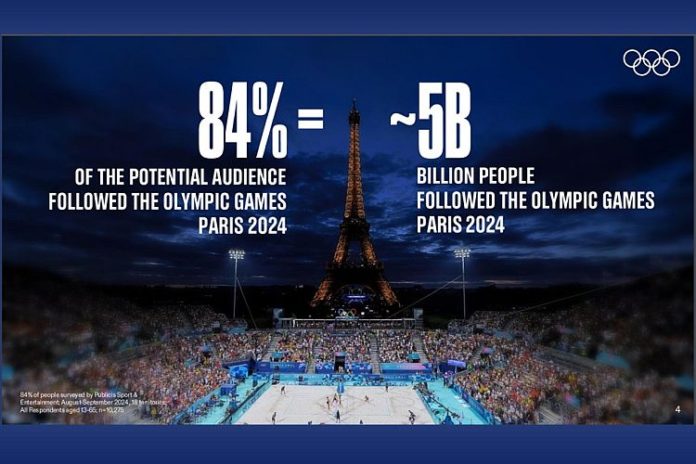★ The Sports Examiner: Chronicling the key competitive, economic and political forces shaping elite sport and the Olympic Movement.★
★ To get the daily Sports Examiner Recap by e-mail: sign up here! ★
≡ SPOTLIGHT ≡
You can make the case that the final four days of the 1984 Olympic football tournament – for men only in those days – at Pasadena’s historic Rose Bowl was the turning point in the history of American soccer.
To the amazement – yes, amazement – of FIFA officials, the 8 August semifinal between France and Yugoslavia drew 97,451 to the Rose Bowl, and 83,642 to original-format Stanford Stadium in Palo Alto, California to see Brazil defeat Italy, 2-1, in extra time.
On Friday, 10 August, Yugoslavia won the bronze-medal match over Italy, 2-1, before 100,374. And on Saturday (11th), France won the Olympic gold, 2-0, over Brazil before 101,799.
Even with their own eyes, FIFA officials could barely believe that 101,799 would turn out for soccer – not American football – in the U.S. Just less than two years later, FIFA awarded the 1994 FIFA World Cup to the U.S., which was a runaway success that set a still-standing attendance record of 3.59 million, and led directly to the creation of Major League Soccer, which opened for play in 1996.
It also cemented the historic importance of the Rose Bowl to soccer in America, underscored by the iconic 1999 FIFA Women’s World Cup final in 1999 and the U.S.’s dramatic win over China on penalty kicks, 5-4, before 90,185, the largest crowd in history for a women’s sporting event.
The Rose Bowl will again be the site for soccer for the 2028 Los Angeles Olympic Games and along with the Los Angeles Memorial Coliseum, will be the first facilities ever to host events at three different Olympic Games. The Rose Bowl hosted cycling on a temporary track in 1932, then football in 1984 and will host the semifinals and finals of the men’s and women’s tournaments in 2028.
But those enormous, record-setting crowds are a thing of the past.
The Rose Bowl has been continuously reconfigured since it opened in 1922, reaching a listed capacity of 104,091 from 1972-97. But a major renovation completed in 2012 installed a huge, multi-level pavilion on the west side of the stadium that reduced the capacity to 91,500 and newer renovations have lowered it some more.
Now that capacity is going to go down again.
The Rose Bowl Operating Company detailed its “Lasting Legacy” campaign this week, which will further modernize the stadium, especially in its offer of new-style seating amenities. Phase I of the project, which is fully funded at about $35 million, includes many technical improvements, but also the removal of seats from the first 28 rows from the south end for a new End Zone Field Club, providing 800 seats with a lounge, bar and other amenities, including being able to see the UCLA football team entering and exiting the field during the game.

This will be completed by 2026, ahead of the 2028 Olympic Games, reducing the capacity from the current 89,702, to perhaps 85,000 or so.
A second phase, to begin after the 2029 Rose Bowl Game, will seriously change the stadium, with the seating area completely replaced and the current 77 rows reduced to 50 and the seat width and leg space enlarged to improve the fan experience. That will take the Rose Bowl down to 70-72,000 seats, a more manageable number for the parking and transportation options available for fans now. Along with a gigantic videoboard for the north end, this phase is priced at $45-50 million and fundraising is ongoing.
With this plan, the Rose Bowl is following the path of the Coliseum, which opened in 1923, and was enlarged to hold the 101,022 attending the 1932 Olympic opening ceremony, and 92,655 for the opening of the 1984 Games.
That changed with multiple renovations, including in 1993 when the 1984 Olympic track was removed to install 14 rows of seats – about 8,000 – closer to the football field. From late 2017 to mid-2019, the University of Southern California, which operates the facility now, invested $315 million to remake the seating and install a Rose Bowl-like pavilion on the south side; those improvements reduced the seating capacity to 77,500 today.
For track & field at the 2028 Olympic Games, a new track will have to be installed on stilts, covering the 14 rows that were added in 1993. That will further bring the capacity down to perhaps 67,000 with the requirements for camera platforms and media seating.
So, these grand old stadia which both welcomed more than 100,000 on many occasions, will be refitted into the 67,000 to 85,000 range for 2028 and then both will seat in the 70,000s after the Games.
They are being future-proofed for their primary football tenants – UCLA and USC – and because they will continue to be major spaces in the Southern California sports scene for decades to come, they will be available and ready for their fourth Olympic Games … in 2068?
¶
★ Receive our exclusive, weekday TSX Recap by e-mail by clicking here.
★ Sign up a friend to receive the TSX Recap by clicking here.
★ Please consider a donation here to keep this site going.
For our updated, 885-event International Sports Calendar for the rest of 2024, 2025 and beyond, by date and by sport, click here!


























